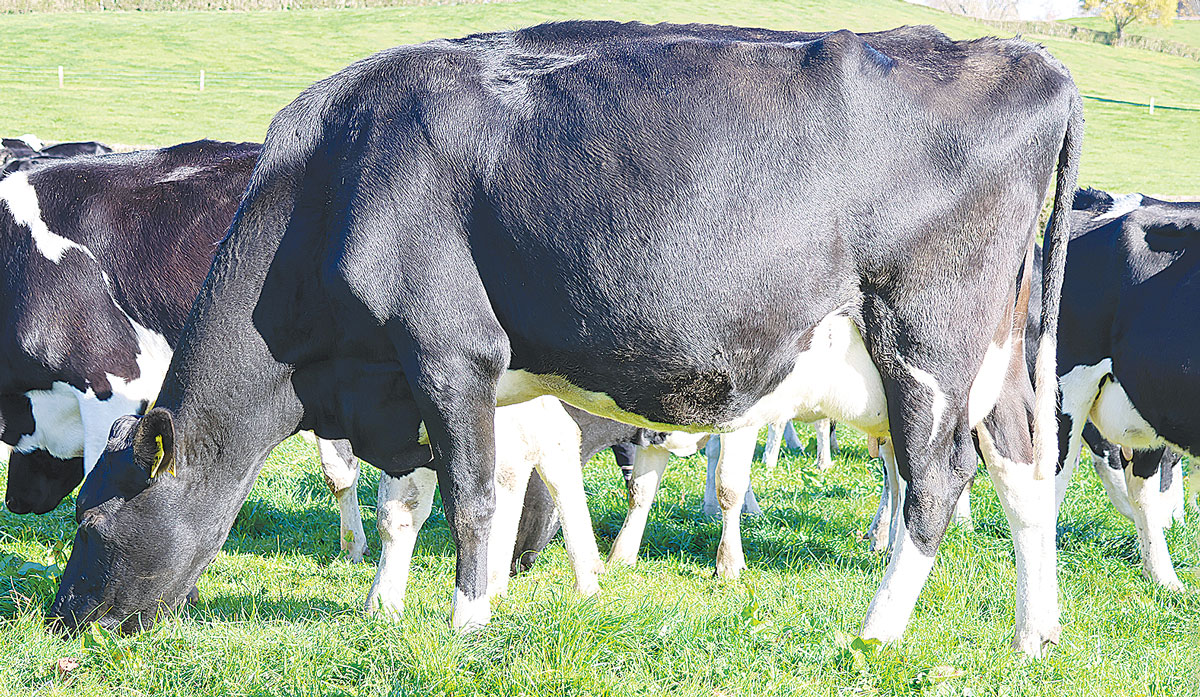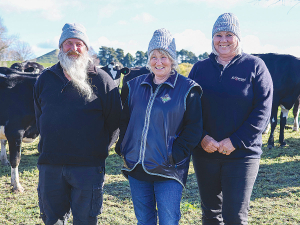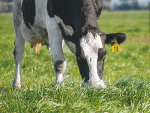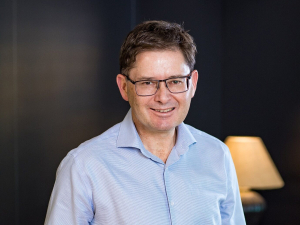The couple milk 200 cows with contract milker Rob Davey through a 22-a-side herringbone on 70ha of rolling country at Rerewhakaaitu, 30 minutes out of Rotorua. When they started dairying in the 1990s, they were told that the most profitable way to milk dairy cows was to milk fewer of them, and to get more milk per cow. They didn’t pay much attention at the time.
Fast-forward and they now look back at that statement with clarity and a first-hand understanding that it was the right advice.
Nigel has always enjoyed his cows and he takes notice. When they employed nutritionist Andre Reidel, of All Farm NZ Ltd, it didn’t take long for a critical knock-on effect to come to Nigel’s attention.
“It formed part of the jigsaw for us, because this had been a pasture-based farm with a bit of hay and silage on the shoulders of the seasons,” Nigel said. “When we added in-shed feeding with a custom-blend meal and focused on our minerals and lead feed, I realised just how much New Zealand farmers have been underfeeding their cows.
“I never loved the crossbreds, but we did have them. And when we started adding those higher-end feeds, the cows that were producing 38 litres plus a day started blowing the centre ligaments in their udders.
“They weren’t holding together, and it quickly became clear that their conformation wasn’t good enough to sustain the extra production.”
Dianne added, “He’d get really frustrated because they were producing well, and next minute their udders would blow apart, and they’d have to be culled.”
Nigel decided to change tack and source Holstein Friesian genetics coming out of North America, the United Kingdom, Italy and France. His first choice of Genetic Enterprises (was acquired by Genetics Australia, and STgenetics New Zealand would later assume the marketing rights).
Today he sits at his kitchen table sharing that he has a four-yearold Galactico ‘daughter’ (Galaxy x Bookem x Shottle) which produced 753 kgMS in 256 days (averaging 2.9 kgMS a day throughout her lactation) on her recently completed season with a Breeding Worth (BW) of 303 and a Production Worth (PW) of 906. She has given him two daughters, and she is due again this spring to REDROCKView Klutch.
His top-producing two-year-old – an Ernest- Anthony Cold P daughter – has finished with 535 kgMS with a BW of 165 and a PW of 385.
His top-producing two-year-old – an Ernest- Anthony Cold P daughter – has finished with 535 kgMS with a BW of 165 and a PW of 385.
“We tested the waters for the first three years, and only used 50% of those international Holstein Friesian sires, but it didn’t take long for us to see a noticeable difference in the young stock,” Nigel said. “They were bigger, longer, and they had more capacity. Once I realised I wasn’t going to have calving problems with them, I made the complete change.
“I remembered seeing those cows in the 1990s that were capable of averaging 27 litres (2 kgMS) for weeks on end. But when we first came here 30 years ago, we were lucky to have got two or three days with those averages.
“Now we get weeks of that production, and we peak at 30-plus litres and 2.2 kgMS. We’ve come full circle on our own farm. It’s a good feeling, and given the environmental restrictions coming in now, it’s been a great move for us.”
Numbers Don't Lie
This season 25% of the herd produced 500 kgMS (including 12 cows with more than 600 kgMS). The two-yearolds averaged 406 kgMS, the threeyear- olds averaged 466 kgMS, and the cows aged nine years or over averaged 511 kgMS.
The challenges of their dryland farm – which includes a 40-minute peak walk to the dairy – is that the heavy Rotomahana mud takes time to warm up in the spring, potentially slowing grass growth if it remains cold and wet. They graze their young stock off-farm, but everything that is in-calf returns on May 1 – often shorting their season to around 290 days in milk.
“For a basic system here, with no run-off for our dry cows, no cropping, no feed pad – just in-shed and grass feeding – our goal is to average 500kg-plus MS per cow,” Nigel explained. “We’re closing in on that now.”
Nigel says there is no doubt in his mind that they needed the right genetics to sustain the increased production. STgenetics New Zealand has been a positive decision. It includes a breeding consultant that he respects in Jean Macky and bull selections he is excited about.
 |
|---|
|
The top cow - Holstein Friesian four-year-old Galactico daughter which produced 753kgMS on her recently completed lactation with a fat percentage of 5.5% and a protein percentage of 4%.
|
Jean has been a part of their breeding decisions for five seasons.
“This is about Nigel’s dream and [to] help him keep improving his herd,” Jean said. “Nigel tells me what traits he wants – like better feet and legs, udders, and capacious black daughters. We usually put together a bull team of five.”
Nigel adds, “We are reliant on Jean to bring her knowledge to breakdown the figures in the catalogue. It’s a bit like having a good bank manager and accountant. Jean is one of the key people in our business.”
Future-Proofing Business For Nigel, STgenetics’ commitment and focus on the industry’s future is good news for his business. It allows him to concentrate on his own future – his heifers – when he visits their next generation at their grazier’s property every six weeks.
“The heifers are looking magnificent,” he said. “You can see the jump in conformation from generation to generation. They are big and strong – as opposed to NZ genetics – and they show more general quality. I’m certainly getting my money’s worth out of my grazing.”
Cows are due this spring to sires: Farnear-Tbr-Bh FALLON, Cillwalsh WONDER, Hanrahan MAGNIFICO, Castleterry VICTOR, Carenda Perseus (PILBARA), Hul-Stein Butterbull COWBOY, REDROCK -View Klutch, Eclipse Akino Uno (SINGULAR), Warramont Superhero DAVE,and Cedarwal REVOLVE.
The sires set to use for the spring of 2024 are: Crohanedairy SONNY (Irish), Busybrook Flyin WIRED (Matriarch), Aot HIGHCLASS, Sjk HELIUM, and Cogent Gc LINCOLN.
Nigel repeats some advice for young farmers that he wished he had taken onboard when it was first offered to him.
“People that are starting out with their herds have the ideal opportunity over their career to breed these high producing cows – especially with the high analysis feed we can put into them, and the technology that is available to us now.
“Believe me, it will pay dividends.”



















